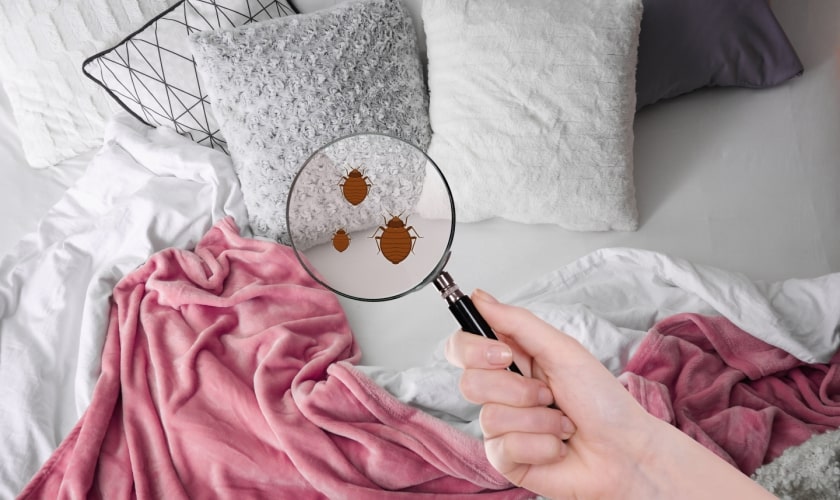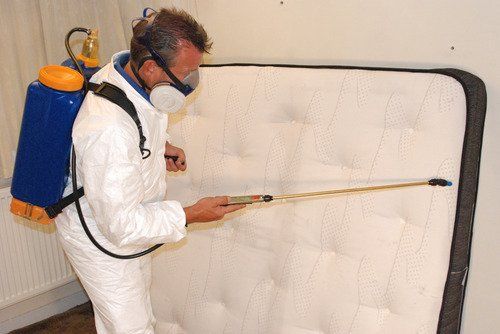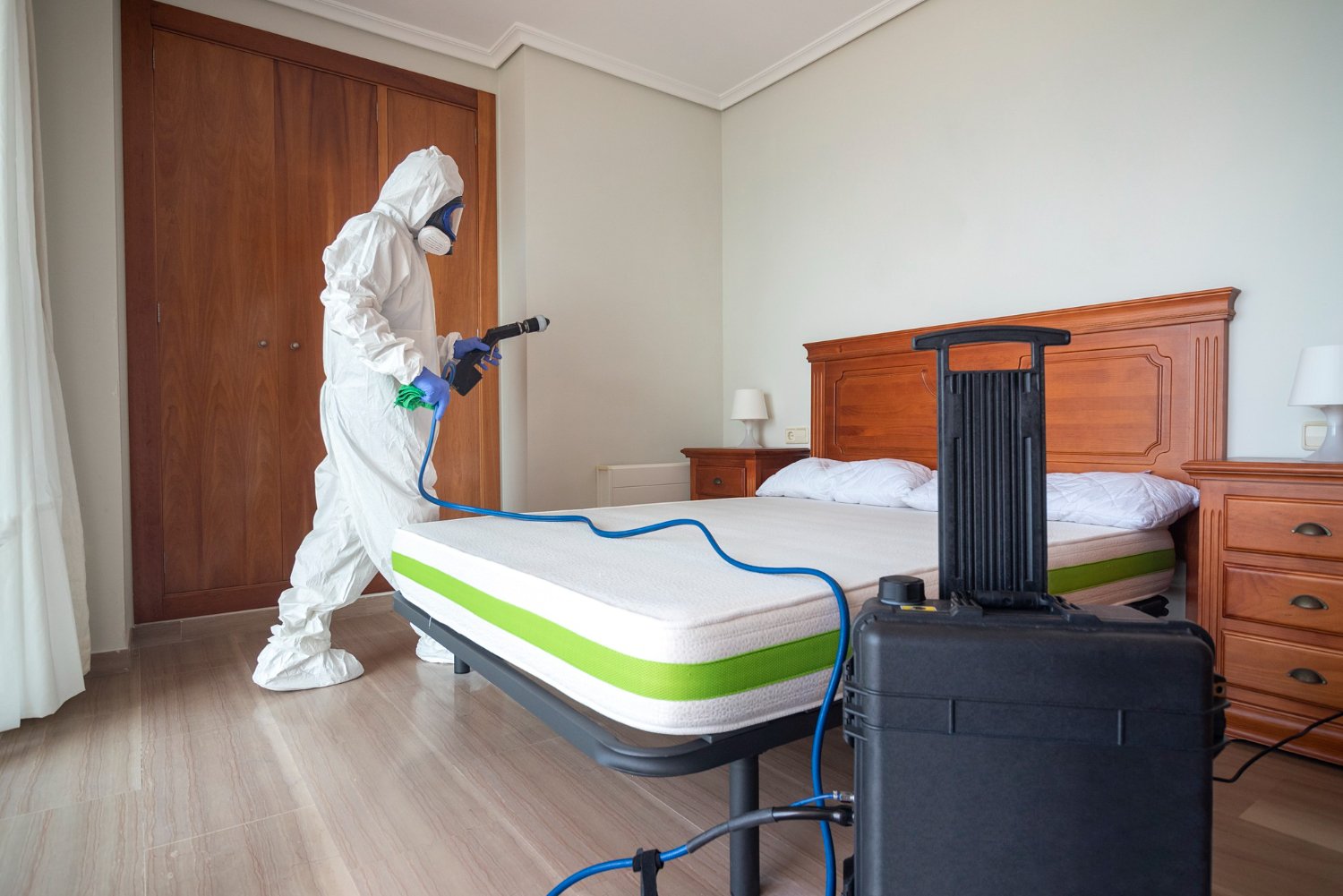Types of Bug Control: Which Method Is Right for Your Problem?
When faced with a bug problem, the choice of a suitable technique for pest control is critical in efficiently taking care of the situation. From chemical therapies to organic services, there exists a series of approaches that can be employed to address various types of pests. Each approach comes with its own collection of considerations and advantages, making the decision-making process a nuanced one. Recognizing the nuances of each method and reviewing their compatibility with the particular pest problem at hand is essential for achieving long-term success in bug administration. By checking out the numerous types of pest control methods available, individuals can make informed choices tailored to their one-of-a-kind scenarios, guaranteeing a more effective and sustainable outcome in bug obliteration.
Chemical Parasite Control
Chemical pest control entails using artificial or naturally acquired chemicals to manage and eliminate pest populaces properly. This technique is typically utilized in agriculture, forestry, and household setups to combat a wide variety of insects, consisting of rats, weeds, and insects. Making use of chemical pesticides can supply quick and targeted options to pest problems, making it a preferred selection for lots of people and services.
One of the essential benefits of chemical bug control is its capacity to quickly get rid of insects, reducing the threat of damages to plants, residential property, and human health. By utilizing details chemicals that target particular insects, this method can effectively regulate infestations while lessening injury to beneficial microorganisms and the setting when used correctly.
However, the usage of chemical bug control likewise increases problems concerning potential unfavorable impacts on non-target species, water resources, and human wellness. It is critical to comply with safety and security guidelines, apply chemicals properly, and think about alternate bug control approaches to decrease these risks and ensure lasting bug management techniques.
Organic Insect Control
Biological insect control, additionally called biocontrol, utilizes living organisms to lower and manage bug populaces naturally. This approach takes advantage of the power of nature to manage parasites without the requirement for artificial chemicals. Biocontrol can involve the introduction of natural enemies of the bug varieties, such as killers, microorganisms, or bloodsuckers, to subdue pest populations. By utilizing the pest's natural killers or microorganisms, organic parasite control provides a lasting and eco friendly solution to pest management.

Mechanical Pest Control
Using manual and physical techniques to manage parasite populations, mechanical insect control provides an alternative approach that does not rely on the usage of living organisms or artificial chemicals. This method involves using obstacles, catches, or various other devices to literally prevent or eliminate bugs. By obstructing pest access factors or establishing up traps to capture them, mechanical pest control can efficiently reduce problems without introducing chemicals into the environment.
One usual instance of mechanical parasite control is the usage of mesh screens on home windows and doors to stop bugs from getting in buildings. This easy yet reliable approach serves as a physical obstacle, maintaining pests out while enabling appropriate air flow. In addition, gadgets like mousetraps, fly swatters, and ultrasonic repellents fall under the mechanical parasite control group.
While mechanical pest control approaches can be labor-intensive and require regular surveillance and upkeep, they offer a environmentally pleasant and sustainable remedy for handling pest problems. By integrating different mechanical strategies, homeowner can produce a detailed bug control strategy that minimizes dependence on chemical pesticides.
Physical Parasite Control

Some common physical insect control techniques consist of using obstacles such as displays or nets to stop insect access, traps to catch and remove bugs, and hand-picking to physically get rid of insects from plants or frameworks. Additionally, methods like heat therapies can be used to manage insects like bed pests by raising the temperature level to degrees that are dangerous to the bugs.
Physical parasite control is particularly valuable in integrated pest management (IPM) strategies, where several parasite control techniques are integrated for reliable pest management while minimizing the usage of chemicals. By using physical parasite control strategies, individuals can effectively resolve pest invasions with minimal ecological effect.
Integrated Bug Monitoring
When carrying out physical bug control techniques as part of bug monitoring strategies, Integrated Pest Management (IPM) arises as an extensive method that leverages different methods to successfully manage pest populations. IPM concentrates on long-lasting avoidance of parasites through a combination of organic, cultural, physical, and chemical tools tailored to details parasite problems. By incorporating multiple control techniques, IPM intends to decrease the risks related to parasites while likewise reducing reliance on chemical solutions.
One key element of IPM is the focus on tracking and analyzing pest populaces to figure out the most appropriate control approaches. This positive approach allows for very early treatment and targeted methods, causing much more reliable parasite monitoring. Additionally, IPM advertises environmentally friendly methods by prioritizing non-chemical control techniques and just making use of chemicals as a last hotel.
Verdict

By using the insect's natural killers or virus, organic insect control uses a sustainable and ecologically pleasant remedy to pest monitoring. - Kings pest control services Cincinnati oh
Using hand-operated and physical methods to handle bug populations, mechanical parasite control uses a different approach that does not count on the use of living organisms or synthetic chemicals.An effective technique to handling bug populaces without counting on chemical or biological approaches entails the use of physical insect control methods.When implementing physical parasite control approaches as part of insect administration techniques, Integrated Bug Administration (IPM) arises as an extensive approach that leverages various techniques to effectively manage pest populations. Chemical bug control includes the use of pesticides, biological bug control utilizes natural predators, mechanical parasite control involves physical obstacles, physical pest control consists of capturing or getting rid of pests, and incorporated pest administration incorporates multiple techniques for an all natural strategy to pest control.